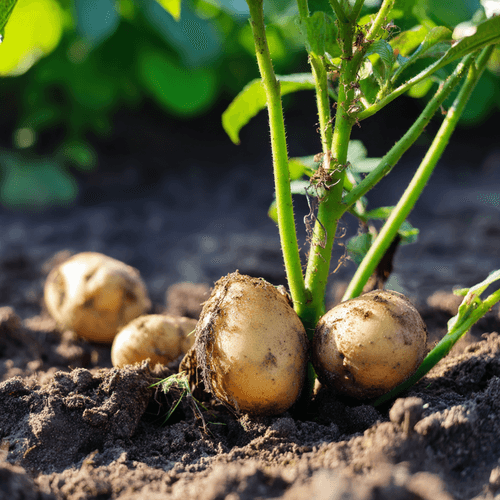Did you know ?
- 1 The largest potato ever grown weighed over 10 pounds.
- 2 Potatoes were the first vegetable grown in space.
- 3 The 'French fry' was allegedly invented in Belgium.

The potato is a starchy tuber widely consumed around the world. Known for its versatility, it can be baked, boiled, fried, or mashed. Rich in carbohydrates, fiber, and essential vitamins, it’s a dietary staple in many cultures.
Did you know ?
View other Tuber vegetables
Nutrition
| Calories | 161 kcal |
| Proteins | 4.3g |
| Carbohydrates | 37g |
| of which sugars | 1.7g |
| Fiber | 3.8g |
| Fats | 0.2g |
Ripeness
Selection
Storage and ripening
Potatoes don't ripen after harvest, but here's how to improve storage :
Health
Origin
Potatoes originated in the Andes Mountains of South America, where they were domesticated around 8,000 BC. Spanish conquistadors introduced them to Europe in the 16th century, sparking global cultivation. Today, potatoes are a staple food in over 100 countries.
Recipes
Gallery
There is no images yet. Submit one now to contribute to the gallery !
F.A.Q
Warnings
Orange flesh, sweeter taste, unrelated species.
Rough skin, starchier, common in African/Asian cuisines.
Heart-shaped leaves, nutty flavor, toxic when raw.